
The recent 4th of July events have caused me great concern. I don’t know what it was like in your neighborhood, but in my neighborhood, fireworks were going off every night beginning the week before and finally ending the week after. I like in the heart of a city surrounded by larger cities just north of Detroit. There are businesses, apartment complexes, senior citizens homes, and a neighborhood full of houses inhabited by families with children and pets. Our neighborhood is full of wildlife, squirrels, nesting birds, wild geese, skunks, rabbits, etc.. The booms were so loud they shook our 6 story building. There were cars lined up all along the streets to view the show. Thankfully there were no incidents. No one was injured. But, imagine something had gone wrong and a fire started? There are trees all over this area, right across from my apartment there is a construction site with stack of lumber and who knows what kind of flammable materials?
When I was growing up it seemed like fire crackers and cherry bombs were pretty easy to come by and were used pretty regularly by practical jokers and bathroom bullies. On the 4th of July we always had sparklers and maybe a few small special effects type fireworks. Cardboard trucks or tanks that would shoot off sparks as they spun around or cardboard snakes that would slither and squirm. But, for the most part, large Fireworks were delegated to programs put on by municipalities or large organizations and required experts to fire them and permits.
My family did on an occasion or two attend some rather spectacular displays. They were really amazing. Much more inspiring an exciting than what I have seen in current displays. Current displays are pretty boring. All the same, just explosions of colors. I witnessed an amazing fireworks display that took place on both sides of a river. It was a enactment of a battle with cannons made of the fireworks themselves that shot fireworks across the river. There were so many other very clever and entertaining themes But, we only went to Fireworks on the fourth of July. I don’t know of any other Fireworks for any other occasion. That was what made the 4th of July so special. The only fireworks we ever saw on any other Holiday were the ones televised from New York City on New Years.
It has only been in recent years that fireworks have exploded in popularity across the nation. People have gone fireworks crazy. Firing them off for any occasion and even for nothing at all. It seems that people feel an occasion is not really special unless there are fireworks. Birthdays, wedding proposals, weddings, anniversaries, graduation… all meaningless unless they are illuminated with Fireworks and the accompanying loud noises.
Besides the Fireworks, there were gunshots. I don’t remember people shooting guns off on any holiday when I was growing up, either. But, now that we have so many crazy liberals who demand that police forces be dissolved and illegal aliens who come from nations where they are accustomed to shooting off their weapons in public and all respect for law and authority has gone out the window; people are shooting off guns for any reason. On the holidays, one wonders which they are hearing Fireworks or guns?
When did we become so lax about fireworks? Which of course are known to be very dangerous explosives. And when did it become commonplace for fireworks to be part of just about every holiday and/or special occasion imaginable?
‘That was the action that saved the consumer fireworks industry.’
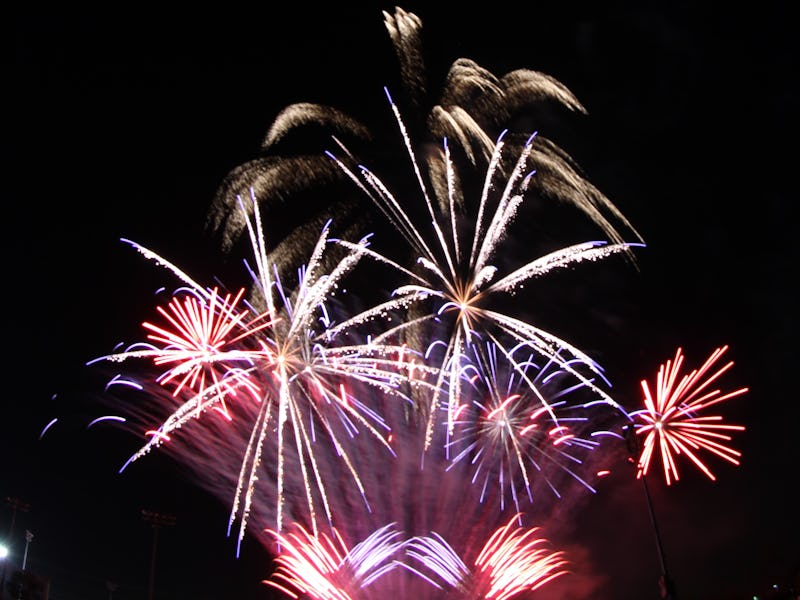
Today, Americans will celebrate the fourth of July the way founding father John Adams intended: by exploding lots of pretty chemicals in the sky. But as you sit back and become mesmerized by the sparkler in your hand, pause to remember a fateful day in 1974, when the United States almost banned consumer fireworks entirely.
It ought to be solemnized with Pomp and Parade, with Shews, Games, Sports, Guns, Bells, Bonfires and Illuminations from one End of this Continent to the other from this Time forward forever more.
But the dynamics of fireworks policy, trade and even construction have changed a great deal since Adam’s idyllic interpretation, largely because Americans couldn’t figure out how to use fireworks safely. By the late 20th century, fireworks became so dangerous that the US almost banned them outright. Paradoxically, the former directors of the American Pyrotechnics Association tell Inverse that they’re actually happy for that near miss. If it wasn’t for the events of May 16, 1974, we probably wouldn’t have any fireworks today.
1966: BAN THE BOMB
The thing to remember about fireworks is that they are, at their core, explosives. Over the years, the US got really good at making bombs bigger, better, and more dangerous. This was particularly noticeable after World War Two, when explosives like the M80 and M100, designed to fight Nazis, fell into use back home. “The reason there was a proliferation of those is because they were technically military devices,” Julie Heckman, the current executive director of the American Pyrotechnics Association, (APA) tells Inverse. “So they were prevalent after World War Two.”
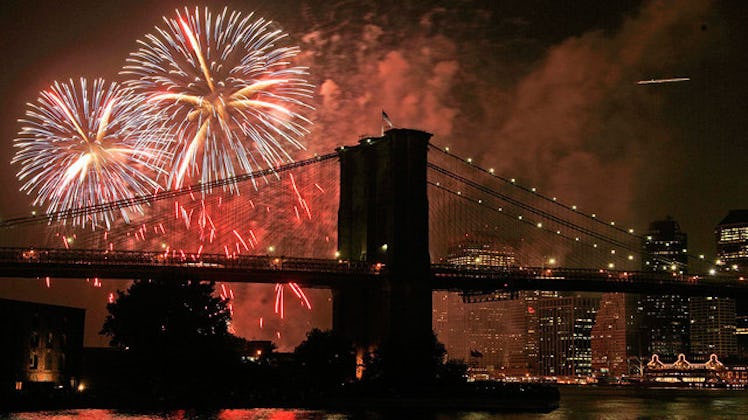
With better regulations, fireworks shows are now relatively safe
By the ‘60s, these military devices had gotten out of hand. Time reported in 1964 that a crowd of 500,000 New Yorkers “applauded delightedly” when a fireworks barge exploded prematurely, killing two crew members. The next year, the New York Times reported that a U.S. sailor was killed by mishandling fireworks while celebrating on a Naval Base in Toledo, Spain. The causes of both of these accidents were military-grade fireworks turned fourth of July toys, many of which were being made illegally.
Finally, in 1966, the US instituted a blanket ban on military-grade fireworks, making it illegal for anyone without a professional license to obtain. But a whole new category of fireworks emerged after 1966, which caused a whole new set of problems.
A GREAT LEAP BACKWARDS
“There were two major things going on,” John Conkling, pyrotechnic chemist and former executive director of the APA, tells Inverse. “One was the continuing sale of large firecracker-like devices. The second thing that was that the U.S. domestic manufacturing that had been reasonable before, was being totally overwhelmed by imports from China.”
After the ban on military-grade fireworks, the US received an influx of consumer-level products from China. This happened primarily because, for the first time since the Mao Zedong’s Cultural Revolution, the US and China were actually talking again, thanks in part to Nixon’s move to officially end the 21-year US trade embargo on Chinese goods.

Nixon visits China in 1969, restoring relations between the two countries
The new products were really good and really safe, according to Conkling. “Imports were beginning to come into the US from China, and one of the major categories of these imports were consumer fireworks,” Conkling describes. “The Chinese had very fascinating, beautiful well-performing consumer fireworks, and they were getting a lot of market attention.”
This was not destined to last. Very soon, the American demand for cheaper products began to pressure the Chinese firework producers. They were used to creating delicate pieces of explosive art, but most Americans wanted quantity, and they wanted it fast. Producers began to cut corners, Conkling says, and it was problematic. At the time, he was using his expertise as a pyrotechnical chemist at Washington College in Maryland to help examine and test fireworks.
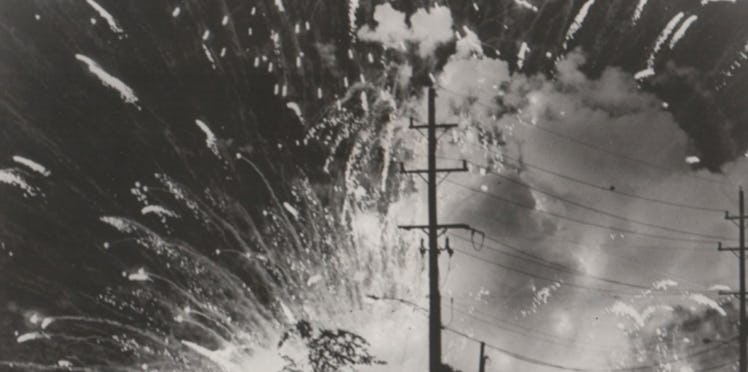
The Brookfield, Illinois firework disaster of 1972
Events like the disaster in Brookfield drew the attention of a newly minted federal agency: the Consumer Product Safety Commission, an offshoot of the Food and Drug Administration. The CPSC was a young agency with something to prove, and its first target was consumer fireworks. On May 16, 1974, the CPSC proposed its ban, issuing regulations underlining the hazardous nature of faulty fireworks. According to a CPSC press release from 1975:
On May 16, 1974, the U.S. Consumer Product Safety Commission issued regulations banning the sale to consumers, as hazardous substances, all firecrackers as well as other fireworks which did not meet specified safety standards and labeling requirement.
BUILDING A BETTER FIREWORK
Conkling, alarmed by the proposed ban, set to work developing a new protocol that could make imported fireworks safer. Without more stringent regulation, America could risk losing fireworks for good.
With the APA, he compiled a list of ways to standardize fireworks and make them safer. The interventions they came up with had less to do with the actual chemicals involved, Heckman says, and more to do with the construction of each firework. “Tipover tests,” for example, ensured that fireworks wouldn’t tip over and shoot back into a person’s face. Famously, they studied how long a firework fuse could burn before users got antsy.
“There were human factor studies done to see to see at what point if the fuse didn’t light, at what point would somebody try to re-approach it,” Heckman says. The ideal length for “fuse burn,” they learned, is between six to nine seconds. Any shorter and you might not have time to clear the area. Any longer, and you might re-approach to investigate and get singed.

Eventually, the APA took these recommendations, among others, to Administrative Judge Paul Pfeiffer, who had been listening to similar testimony across the country from Kansas City to Honolulu. Among the various people who had made similar pleas to Pfeiffer were trade groups, pyrochemists, and, according to a contemporaneous New York Times article, “Chinese Americans in Hawaii, who said fireworks played an important role in their religious and cultural celebrations.”
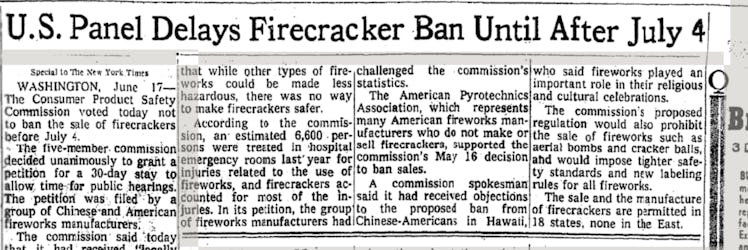
The June 18th article in the New York Times reporting that the UPSC would delay the firecracker ban. They eventually threw it out due to efforts on behalf of the APA
Immediately after the CPSC vote, Conkling began making trips to China —he estimates roughly 40 in total — in an attempt to set up a lab to test fireworks according to CPSC regulations. That lab, called the American Fireworks Standards Laboratory, has made significant progress in keeping fireworks safe for all of us. It still exists today.
Today, Conkling looks back fondly on the tumultuous time that almost derailed both his livelihood and America Independence Day celebrations as we know them. “That was the action that saved the consumer fireworks industry,” he says.
spacer
I have to tell you that I am concerned with what might be in those fireworks. We know that scientists have been playing around with the nature of everything. There is nothing that has not been polluted. They add chemicals to our food and to every single thing we use on our bodies and put in our bodies. We have no idea what they know that we do not, or how those changes are changing us. I have no doubt that the fireworks we see today are not anything like the original fireworks.
BIRTHDAY FIREWORKS – A NEW PHENOMENON

Fireworks are now expanding beyond the Bonfire Night displays of yesteryear and this is largely thanks to the millennium celebrations during which it became the ‘in-thing’ to have a firework display to rival that of the cities around the rest of the World which had taken the initiative to hold firework displays for many years prior.
Fireworks are now used to celebrate weddings, birthdays, special anniversaries, product launches and on occasion, to celebrate the life of a lost loved one. This is particularly relevant in the case of the lantern.
Here at Epic, we liaise with customers wanting a ‘few garden fireworks’ for the little ones all the way to the massive celebratory displays held by our more famous clientele for their family and friends.
What would you like to celebrate this year in style? Your fortieth birthday (bah humbug), your son/daughters education successes at University? A 21st or 18th Birthday celebration or are you getting married and want something to add the final wow factor to your wedding? We have a display for every occasion. Our garden fireworks packs start from as little as £3.14 for the Superstar selection box all the way up to the massive Ultimate Bonfire display pack at £2000.00 which is a guaranteed wow factor.
The Epic team will help you with set up plans, firing order and what to do in the event of bad weather. We will happily liaise with your family/friend who will light the display for you to ensure that they have a complete understanding and you are welcome to call for advice at any time.
Or maybe, you would just like a rocket to let your loved one know how much you care. We have the largest selection of ‘big rockets’ in the UK and can even show you a video in the store of each in the air to ensure that you are fully conversant with the effects to expect. We have everything from smiley faces to love hearts on offer.
So, if you are in the Yorkshire, Nottinghamshire or Derbyshire region and would like to come along to discuss your needs with an expert in the field of pyrotechnics, just call in to see us in Tankersley or give us a ring and we will chat about your requirements.
spacer
That article was from the British Isles of course, but we have seen the same thing happening here in the good ole USA. People have gone crazy for fireworks. There is hardly an event that occurs without fireworks.
Fireworks stands used to set up for the 4th of July and break down until the next year. NOW, many are open all year round.
SPACER
America’s #1 Fireworks Retailer
spacer
Red Apple® Fireworks: Buy Fireworks Online
spacer
Fireworks Warehouse
spacer
As I mentioned before, I don’t remember any fireworks celebrations for New Years, accept the ones we watched on Television, live from New York. Apparently, there have been other major cities as well. But, for the most part individuals and smaller towns not so much, until recently.
spacer
Before Times Square: Celebrating New Year’s in old New York
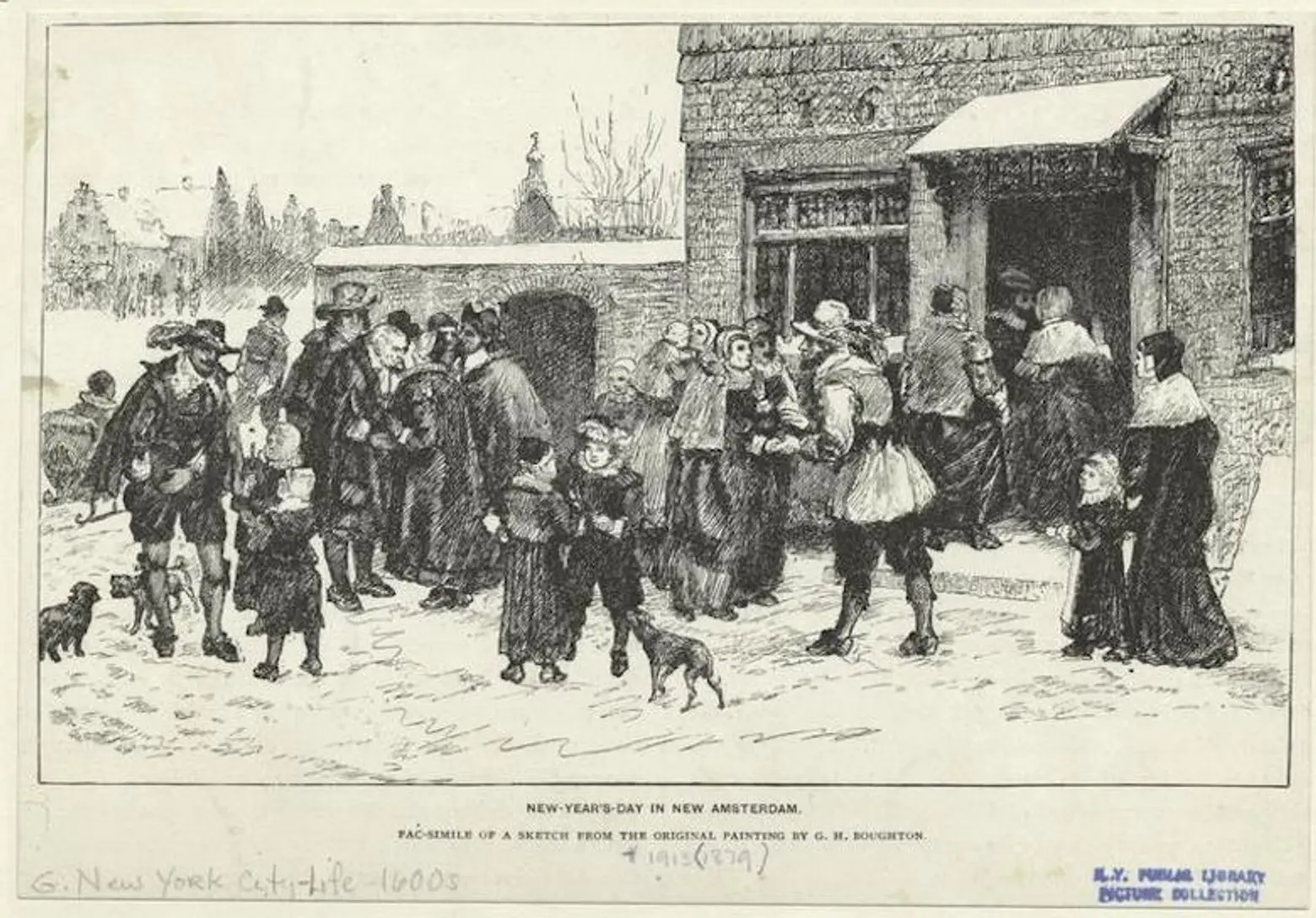
The Miriam and Ira D. Wallach Division of Art, Prints and Photographs: Picture Collection, The New York Public Library. (1878). New-Year’S-Day In New Amsterdam. Courtesy of NYPL Digital Collections
Every year on December 31, the eyes of the world turn to Times Square. New Yorkers and revelers worldwide have been ringing in the New Year from 42nd Street since 1904 when Adolf Ochs christened the opening of the New York Times building on what was then Longacre Square with a New Year’s celebration complete with midnight fireworks. In 1907, Ochs began dropping a ball from the flagpole of the Times Tower, and a tradition for the ages was set in motion. But long before Ochs and his proclivity for pyrotechnics, New Yorkers had been ringing in the New Year with traditions both dignified and debauched. From the George Washington and the old Dutch custom of “Calling,” to the rancorous tooting of tin horns, one thing is clear, New York has always gone to town for the New Year.
We’ll start this story with George Washington. You may know him as a general and as a statesman, but did you know that he was also a big fan of New Year’s celebrations? Together with his friend and fellow patriot, John Pintard, who founded the New-York Historical Society, Washington liked to celebrate the New Year in New York by following the Dutch tradition of “Calling” on friends and acquaintances on New Years Day and receiving calls at his own home.
Living at 1 Cherry Street, in what was the nation’s first Presidential Mansion (later knocked down to build the Brooklyn Bridge), Washington made calls throughout Lower Manhattan.
Washington moved from New York to Philadelphia in 1790, when the Nation’s Capital moved from here to there, but his favorite New Year’s tradition stayed popular in New York. In fact, Calling remained the most popular New Year’s custom in the city throughout the first half of the 19th century. But as early as 1801, a new tradition was tolling away Downtown.
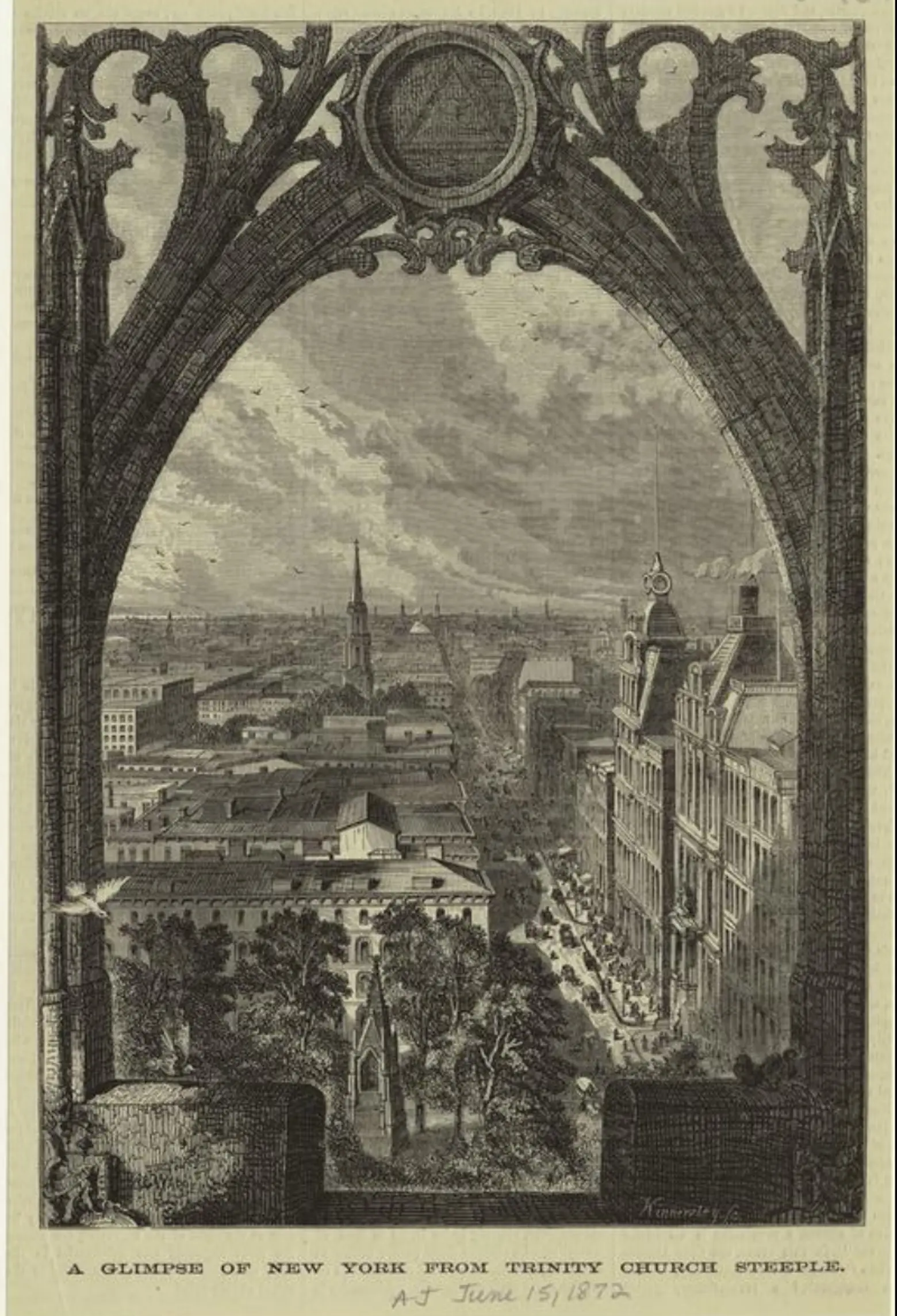
The Miriam and Ira D. Wallach Division of Art, Prints and Photographs: Picture Collection, The New York Public Library. (1872-06-15). A glimpse of New York from Trinity Church steeple; Courtesy of NYPL Digital Collections
That year, the vestry minutes at Trinity Church recorded that “eight pounds be paid to the persons who rang the bells on New Years Day.” By the late 1840s, Trinity’s bells were a major part of New York’s New Year.
The second half of the 19th Century found New Yorkers quite literally ringing in the New Year at Trinity Church, because Richard Upjohn’s Trinity (the church we know today) was consecrated in 1846, and featured something the two earlier Trinity Churches did not have: a full octave of bells chiming in the belfry.
An enterprising bell ringer could toll out popular tunes from those bells, and, thankfully, Trinity’s resident ringer, James E. Ayliffe, was up to the task. The New York Herald reported that, in order to ring in 1860, Ayliffe made “the air redolent with harmony” and tolled out “Hail Columbia,” “Yankee Doodle” and “some sweet selections from ‘La Fille du Regiment.’”
By the 1870s and 1880s, Trinity’s bells drew crowds from as far as New Jersey, Long Island, and “even,” the New York Times reported, Staten Island. According to the paper, the thousands who gathered around Trinity for the New Year’s celebration represented “all classes of New York society, from the poorest to the richest.” Together, the crowd “stood quietly enjoying the glorious night and the ringing of the bells.” As the New Year dawned, they “joined their voices, and to the accompaniment of the bells, sang loudly and impressively the hymn ‘Praise God from whom all blessings flow.’” (A far cry from the debauchery and shenanigans of today’s celebration.)
But, by 1885, a new sound joined this heavenly chorus: the hooting of tin horns. To Reverend Dr. Morgan Dix, the rector of Trinity Church, the horns were a “horrible din” that drowned out the bells. By 1893, Dix was so aggrieved by the offending noise, he canceled the peal. (A small army of about 30 Lower East Side boys simply arrived at his home on West 25th Street equipped with horns, and proceeded to hoot their disdain).
The peal was restored the following New Year. By December 31, 1896, the New York Times reported, crowds swelled the streets of Lower Manhattan by 7 p.m. “Up and down lower Broadway the crowd wandered…and the irrepressible horn vender was in evidence at every point. As the New Year approached, the crowds became denser and denser, and there was a continuous stream of humanity parading down Broadway towards the church. At 11 o’clock, the crowds were so thick in the vicinity of the church that the cable cars, each bringing their additions to the throng, were almost entirely stalled.”
During this wall-to-wall celebration, more women took part than ever before. Women wielded more than a quarter of the tin horns that year, and, the Times noted, “to their credit, be it said, they were not lacking in ability to use them.”
But, even a celebration like that one could not hold a candle to the festivities of December 31, 1897, for New Yorkers weren’t just ringing in a New Year, they were inaugurating a whole new city. January 1st, 1898, marked the consolidation of all five boroughs of New York City into a brand new municipality: Greater New York.
And where better to celebrate the dawn of the great new city than City Hall? A hard, driving rain poured over New York that night, but the city turned out just as hard. To mark the New Year and the new city, fireworks blasted overhead, cannon fire thundered from the Battery, steamboats whistled in the harbor, skyrockets showered City Hall in a blaze of red, blue, silver and gold, and brass bands played for a crowd of 50,000.
Suddenly, on the stroke of midnight, a new flag was electrically unfurled over City Hall, and the City of New York was born.
With a new city came a new tradition. As Greater New York blossomed into the greatest city of the 20th Century, Midtown Manhattan became “The Crossroads of the World,” and Times Square began serving up a world-class New Year’s celebration. These days, more than a billion people worldwide watch the ceremony in Times Square, and who knows, some of them might even be tooting tin horns.

Is it true that you don’t set off fireworks on New Year’s Eve?
I just read that it’s not really done in the US and that Americans mainly set off fireworks on Independence Day. Here in Germany a lot of people let off fireworks leading up to midnight on NYE. I’m mainly talking about private displays in your back garden. I’m sure bigger cities organise their own fireworks displays in the US as well.
Much of the country is so cold that outdoor events aren’t as popular.
This year it was upper 40s around midnight. That’s very warm for this time of year. However, it was foggy and rainy, so not the best weather for fireworks. Although we stopped at a gas station around 7 pm and did actually hear them, which was surprising.
A couple years ago it was like -1 around midnight, snow on the ground too. Nobody’s setting off fireworks in that shit lol.
Vs New Year’s where there are tons of other activities, and fireworks also happen. Every single new years, fireworks go off at midnight everywhere I’ve lived.
Georgia


Ed Jones/AFP via Getty Images
In the early 1970s, the market for fireworks was heavily regulated in many states. But not so much in Tennessee.
Back then, Glenda Tinnin and her husband ran a souvenir shop and restaurant alongside a highway in the state. Their business was doing pretty well, but then an even more sparkling opportunity lit up their entrepreneurial ambitions.
“My son, who was 12 at the time, started selling fireworks out on the front porch, and he was doing better business than we were,” Tinnin says. So they decided their roadside business should blast off in a new direction.
Glenda and her husband began selling fireworks at their store. And they put a big hand-painted sign on their storefront: Hee Haw Fireworks, which was emblazoned in red capital letters.

Julia Ritchey/NPR
Today, 49 years later, Hee Haw Fireworks has rows and rows of explosives filling their store. “We have the Death Shell, Nishiki, Excalibur,” Tinnin says. There’s also one called “One Bad Mother” and “One Bad Mother In Law” and — our personal favorite — the Mother Of All Bombs, or M.O.A.B. “All the good brand names we carry.”
Since Glenda began selling fireworks, the market for them has changed a lot. The changes really picked up the pace after 1972, when Congress set up the U.S. Consumer Product Safety Commission (CPSC). Fireworks, with their history of maiming people, were one of the agency’s first targets.
Jay Zagorsky, a professor at Boston University’s Questrom School of Business, says the CPSC has worked to make a whole bunch of changes to fireworks over the years.
“One, they made sure for a rocket shooting off, that the bases were stronger and longer, so that the rockets didn’t tip over, and then you had a rocket shooting along the ground at spectators,” Zagorsky says. “The second thing that they did is they made sure fuses were consistent. Because oftentimes — before [the CPSC] came along — you could light a fuse and you had no idea if it was gonna blow off in a couple of seconds or it was gonna take a long time, causing some people to walk over going, ‘Hmm, is this a dud?’ And then it would blow up in their face.”

Julia Ritchey/NPR
Zagorsky says the agency also made sure fireworks contained no prohibited chemicals, including lead. Before these regulations were imposed, fireworks would “explode in a spectacular color, but basically rain down poisonous chemicals,” he says. The agency also helped the industry standardize fireworks. “And that meant, basically, your cherry bombs and your firecrackers all had the same amount of kaboom.”
An Exploding Market
Business at Hee Haw Fireworks has been good, and, over the years, it’s been helped by the fact that residents of nearby counties and states haven’t been able to buy fireworks as easily as you can in Tennessee. “A lot of people from Kentucky and Indiana” come and buy fireworks from them, Tinnin says. “In fact, I got a man coming in today. He was actually our first customer. And he’s from Louisville, Kentucky.”
While it’s still easier to get fireworks in some states than others, the clear trend across the country has been toward greater liberalization in sale and use. Since 2000, 19 states have relaxed their fireworks laws, according to the American Pyrotechnics Association.
Growing up in Massachusetts — which, today, is the only state that completely bans all forms of fireworks, including sparklers — Zagorsky remembers a guy in his neighborhood who did brisk business selling them illegally out of the trunk of his car.
“He made a fortune during the 4th of July,” Zagorsky says. “Basically the entire neighborhood showed up, like standing in line with cash in their hands, waiting to hand him money so that this illegal contraband could be bought for the week before 4th of July.”
[Editor’s note: This is an excerpt of Planet Money‘s newsletter. You can sign up here.]
But, Zagorsky says, many states and counties grew tired of their residents crossing jurisdictional lines to buy fireworks — and they realized they were losing out on potential revenue from these patriotic backyard explosions.
“If people are going to be doing these activities, and I just don’t mean fireworks, many politicians say, ‘Well, maybe we should profit a little bit off of it,‘” Zagorsky says. “Maybe we can fund some of the key services we need to provide our citizens. So if people are gonna gamble, we may as well tax gambling.If people are going to illegally smoke marijuana, maybe we should tax that. It’s the same thing for fireworks.”
There remains a patchwork of laws restricting the use and sale of fireworks in many parts of the country, including in the West, where there are drought conditions and fire risk.
But, Zagorsky says, increased product safety and the seeming inevitability of these purchases across jurisdictional lines are why we’ve seen a general kaboom in fireworks liberalization across much of the nation. These laxer laws have helped fuel another kaboom in sales.
Data from the American Pyrotechnics Association finds that the consumer fireworks industry has seen its annual revenue grow from $407 million in 2000 to $2.3 billion in 2022. “Display fireworks” — think big fireworks events on July 4th put on by professionals — accounted for an additional $400 million in revenue.
The American Pyrotechnics Association also tracks estimates of the total weight of fireworks sold. In 1976, according to their numbers, Americans purchased 29 million pounds of fireworks. In 2022, we purchased 461.7 million pounds.
In addition to laxer regulations and increased product safety, Zagorsky says, the explosive growth in fireworks sales has also been fueled by cheaper products, thanks largely to productivity growth at factories in China, where most fireworks are made.
Injuries From Fireworks
With this explosion in firework sales, you might also expect there to be an explosion in injuries from fireworks.
The American Pyrotechnics Association claims that has not been the case. “During this period of unprecedented growth, fireworks injuries have declined dramatically due to industry safety education efforts and the ever improving quality of its products,” the organization says in a release. “Over the most recent decade, this downward injury trend continues even as an increasing number of states & municipalities have relaxed their consumer fireworks laws — in fact the injury rate was almost 70% lower in 2022 compared to 2000.”
But Zagorsky says injuries have, in fact, been creeping up in recent years. One study found that emergency room visits due to injuries attributed to fireworks increased from 5727 in 2008 to 7699 in 2017 — a 34% increase. The scholars found that most of the victims were male and — surprise, surprise — the vast majority of these accidents happened in July.
“We base our reports on data from emergency rooms around the country, and what we’re seeing is that the number of deaths and injuries associated with fireworks remains high,” says a spokesperson from the agency.
Julie Heckman, the executive director of the American Pyrotechnics Association, counters that “the CPSC and other groups don’t consider the extreme increase in consumption.” Once you consider that many more people are using fireworks these days, she argues, “the fireworks-related injury rate is the lowest ever recorded.”
“In 1990, for every 2 million kilos of fireworks, we had one injury,” Zagorsky says. “Today for every 2 million kilos, we have 0.2 injuries. So, basically, injuries over the last 30 years with fireworks — after adjusting for the explosive growth in fireworks — has fallen by a factor of five.”
Interestingly, according to research from the National Fire Protection Agency, fires due to fireworks have also declined somewhat significantly in recent decades, even as firework sales have skyrocketed. Some of the safety regulations imposed over the years — which have, for instance, reduced the likelihood that fireworks tip over and have outlawed the most dangerous types of fireworks — may help explain why fire risks have declined.
At the same time, however, a recent report from the U.S. Consumer Product Safety Commission suggests that makers of fireworks are still skirting safety regulations. They find that “approximately 43 percent of selected and tested fireworks were found to contain illegal components that could cause severe injuries. These components include fuses that do not comply with the law, the presence of prohibited chemicals, and pyrotechnic materials overload.”
An audio version of this story ran on The Indicator. Listen to it here
FIREWORKS ARE CHEMTRAILS: Death to Pollinators
Why do you think July 4th is so heavily promoted? Why do you think we now shoot fireworks on Memorial Day, Labor Day and New Years too? Getting us to help seal our own fate is part of the plan…
The military secretly spraying sh*t in the sky from planes is nothing new. Here’s a two-minute video from WWII:

A 53 second video

They have also been dropping things on us our entire lives; fibers, lice, ticks, goo, harmful bacteria: (2 minute video)

So it should be of no surprise that was has been done is being done because it never stopped being done. Anyone who claims they’re not geoengineering because “they would tell us first” or “they would need permission from Congress” – dude, they never asked to do any of the prior 75+ YEARS worth of spraying experiments, why would they start now? Do you think it’s fluke that military documents are Classified for at least 30+ years when the average lifespan is under 80? Nobody can ever be held accountable because by the time it comes to light, they’re dead. With that being said…
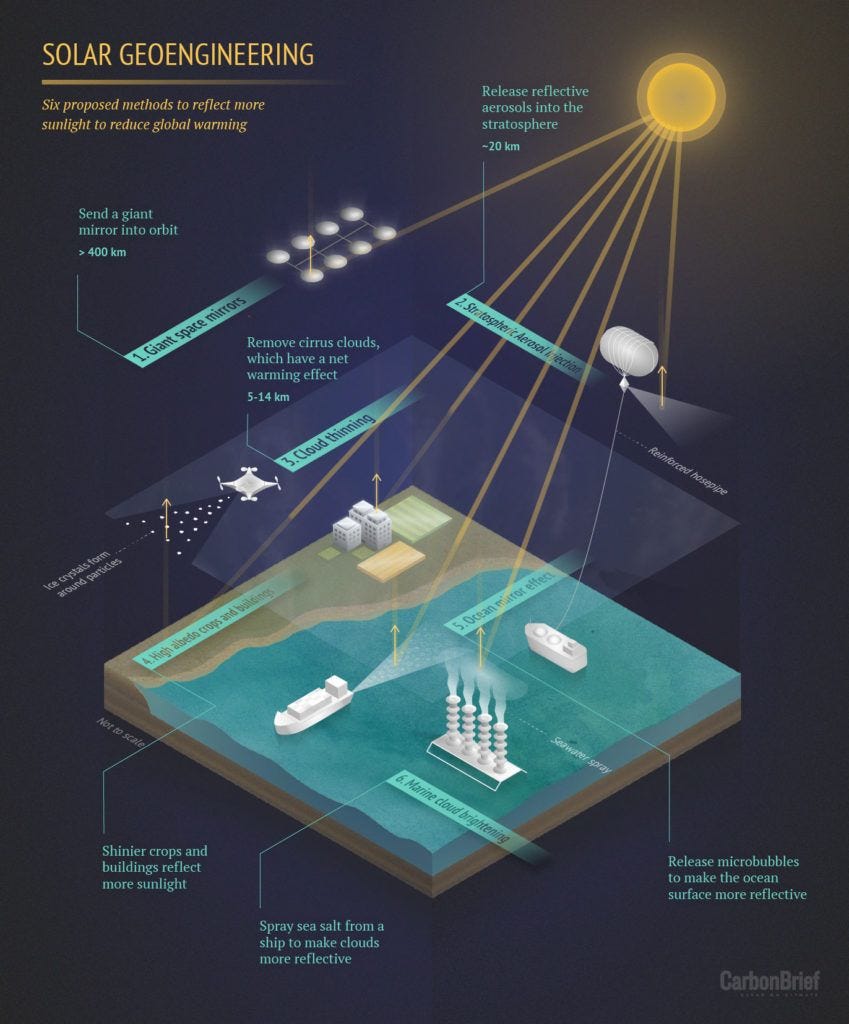
In simple terms: spraying toxins into the sky to block the sun to save the planet.
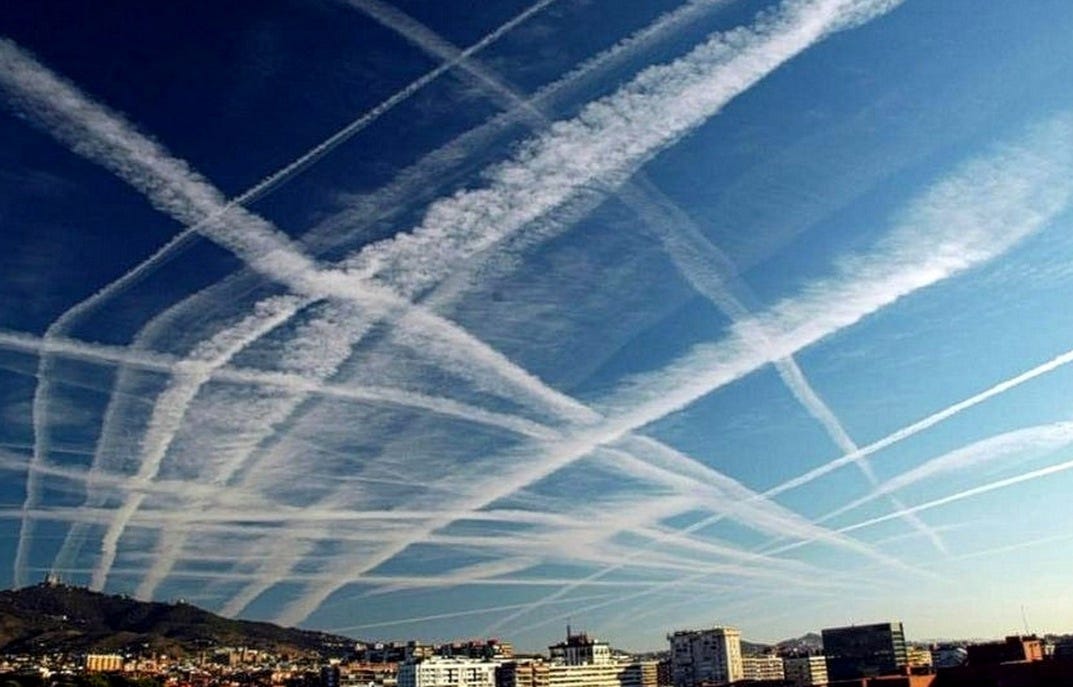
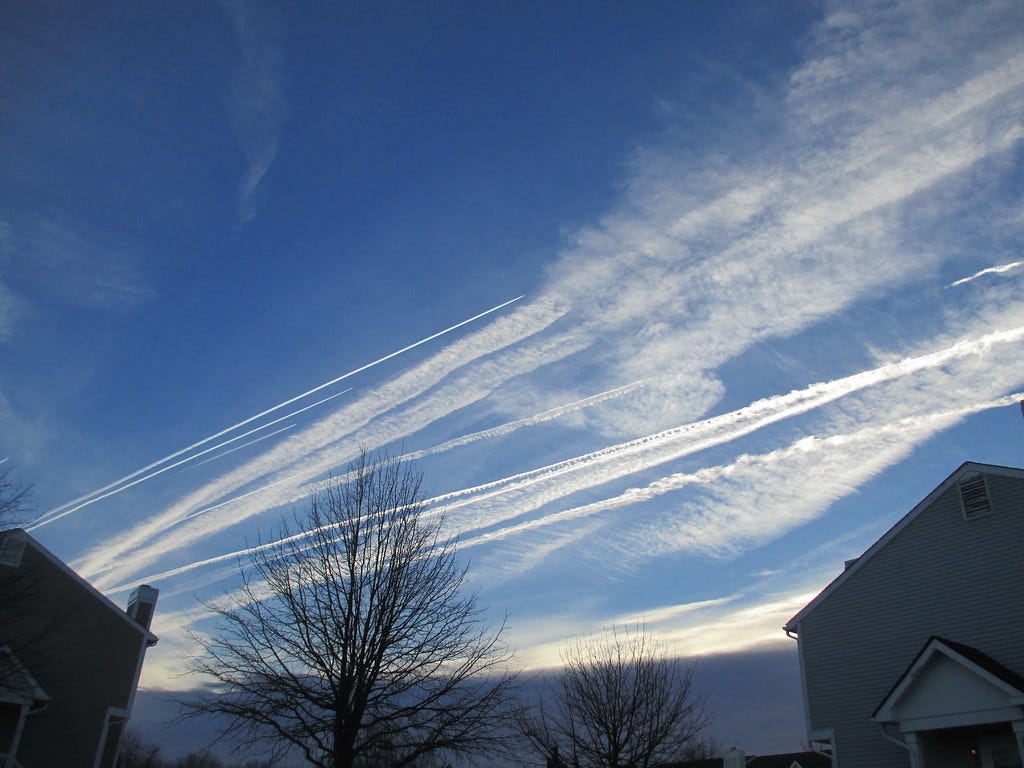
(22 second video)

The correct terminology for these programs includes Solar Radiation Management (SRM), Stratospheric Aerosol Injections (SAI), Solar Geoengineering and a list of others. “Chemtrails” is a slang term that was not invented by conspiracy theorists and was actually created by the United States Air Force. Here’s their 1990s US Air Force Academy Booklet Called “Chemtrails”.
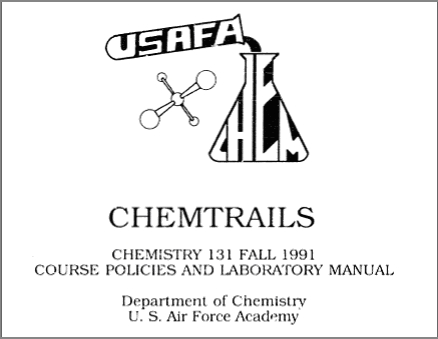
And one of the reasons we know the military is who is currently spraying is because the unmarked spray planes are not on radar while emitting massive plumes while flying illegally close and flying illegal flight patterns. If you or I did this we would be taken out of the sky in moments for “National Security” reasons. If a normal pilot did this his license would be pulled and he may face criminal charges. (27 second video)

I’m oddly crabby today (more on that in a moment) so we aren’t going to dive into geoengineering much in this piece, but if you want to learn more about the programs, I have written a wealth of content on this topic including:
- 1992 Chemtrails Document: Should we Spray Sulfuric Acid or Dust?
- 1985: NASAs Chemtrail Releases (Barium, Strontium, Aluminum)
- Chemtrails: Fake Snow vs Blowtorch
- Chemtrails: TREES DYING IN MASS – Meet Your New Mechanical Trees
- Chemtrails: BEES DYING IN MASS – Meet Your New Robot Bees
- Chemtrails are a Hoax: THE GREATEST PSYOP IN HISTORY
- Chemtrails: Drought & Storms will Make People BEG US for GeoEngineering to Save Them (2009)
- Chemtrails, The CIA an Insurance Company and the Memo They Want Scrubbed
- STEALING THE SUN: March 2023 vs March 2024 Daily Comparison
- Cloud Seeding is TOXIC AF & Blocks the Sun: the Truth About the Chemicals Being Sprayed in OUR AIR
- Whooping Cough Chemtrails: The Church of Scientology Goes to War Against the CIA
- Chemtrails Government Document – “Target: Neighborhoods, 30 Minutes a Day”
- Congress Chemtrails Testimony: When We Start Spraying, No More Blue Skies, Only White
- Chemtrails Video: Military Whistleblower Kristen Meghan Testimony
- Chemtrails Video: UK Pilot Testimony
- Chemtrails 2024: Government Using Frequency to MOVE CLOUDS TO BLOCK THE SUN – 100% Proof the Arctic Freeze was Man-Made
- Chemtrails Video: Arizona Town Hall
- Chemtrails: Rip Out Forests and Spray Chemicals- Council on Foreign Relations Meeting
- Chemtrails: CLASSIFIED PLANE FUEL – FOIA Request DENIED
- Poisoning the Ocean to Stop Climate Change
- Spray the Sky with PISS: New Chemtrail Patent
- Chemtrails: Is the Government Secretly Spraying SOAP to Increase Car Accidents?
- Chemtrails Video: California Meeting #1
- Solar Eclipse Chemtrails: What Were They Trying to Hide?
- Chemtrails: You Can HIRE NASA to Release Your HAZARDOUS PAYLOAD into the SKY
- Chemtrails Video: California Meeting #2 (first half)
- Chemtrails Video: California Meeting #2 (second half)
- Military Dropping Chaff to Cause Power Outages
DEATH AND EXTINCTION

Aluminum nanoparticles are killing trees like never before. Decades ago Monsanto patented aluminum-resistant seeds. Is that just a fluke too? (2:14 video)

Anyone who looks around can see the mass extinction: (2 minute video)

Which brings us to:
INGREDIENTS IN “CHEMTRAILS”
The most common ingredients, which are coming down in our rain and snow samples, include:
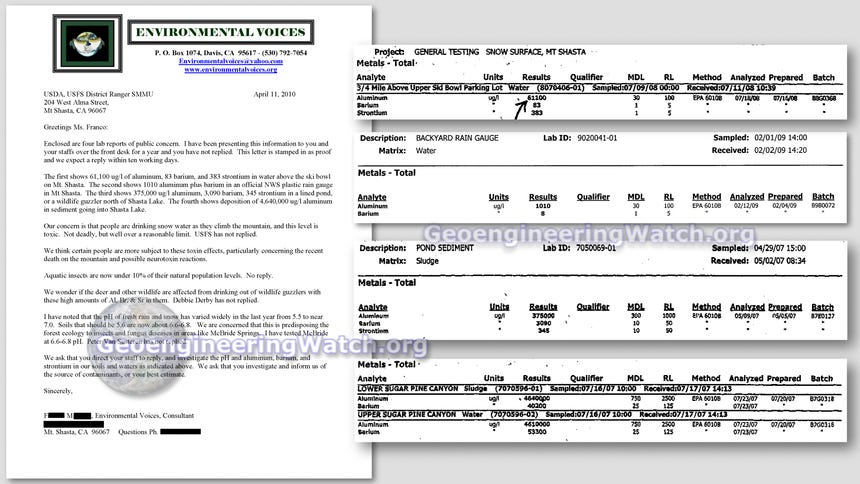
- Aluminum and Trimethyl Aluminum (TMA)

- Barium
- Strontium
- Titanium

OTHER INGREDIENTS
Keep in mind, when water tests are ran they typically are not testing for every single ingredient, so a test not showing Graphene does not necessarily mean it did not contain Graphene.
- Arsenic
- Thorium.
- Cesium
- Polymer Fibers
- Lead
- Lithium
- Mercury
- Graphene
- Sulfur / Sulfuric Acid / Sulfur Dioxide
- Ethylene dibromide
- Nano-aluminum coated fiberglass
- Unidentified bacteria
- Uranium
- Yellow fungi mycotoxins
- Bacilli and molds
- Calcium
- Chromium
- Copper
- Silicon
- Selenium
A while back I made a simple color chart. The colors will vary based on the method of release.
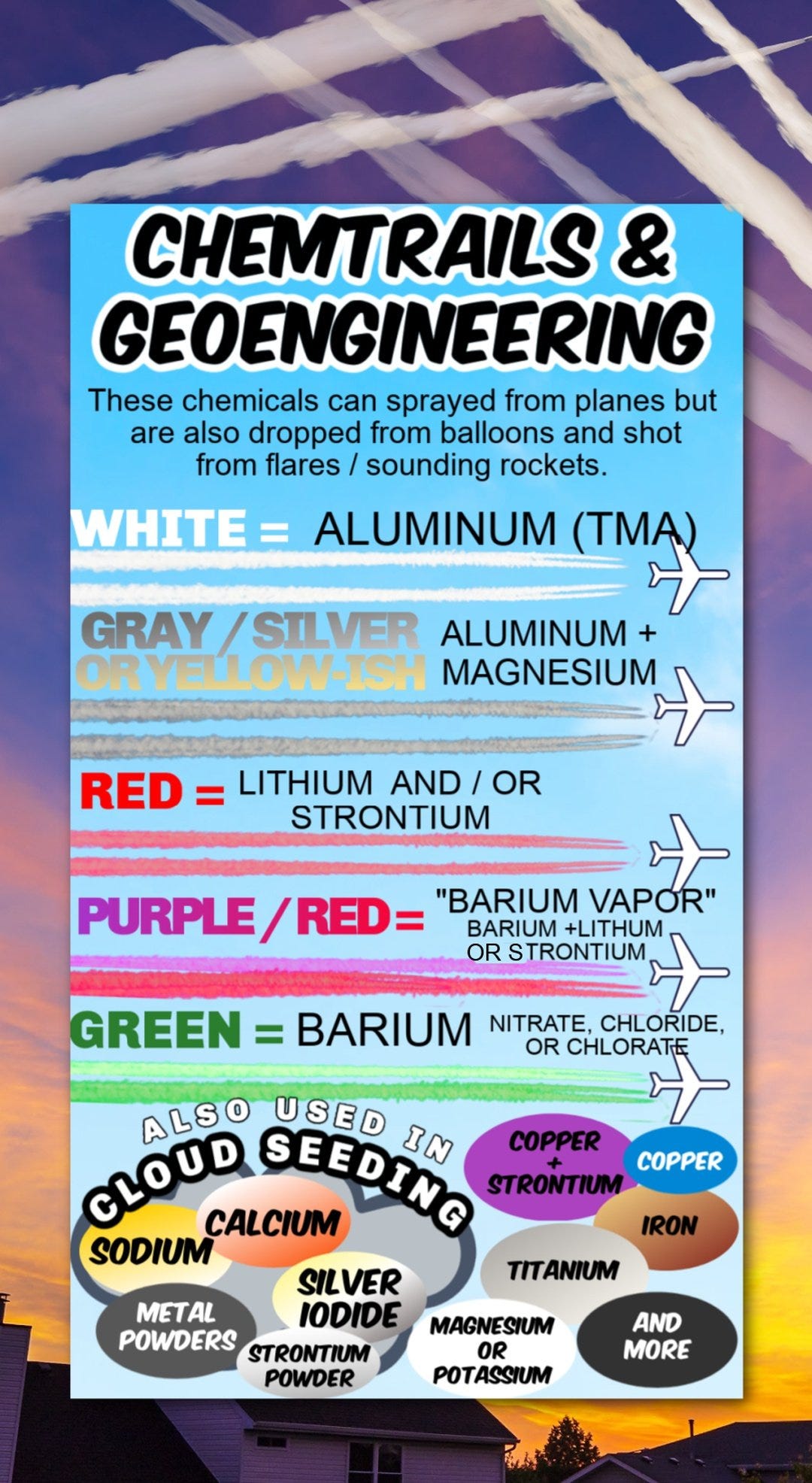
Now let’s discuss fireworks:
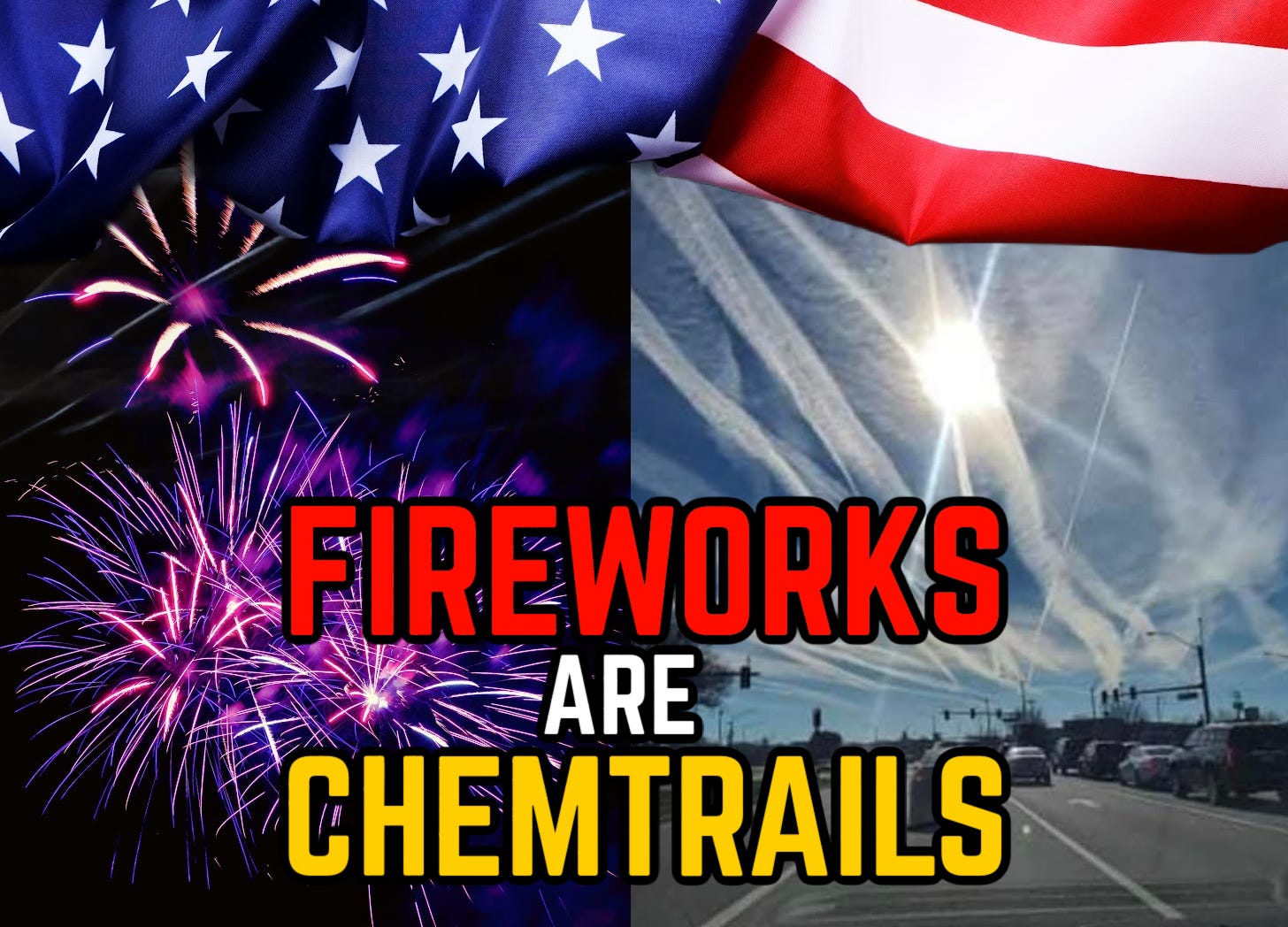
The identical ingredients used in GeoEngineering are used in fireworks:
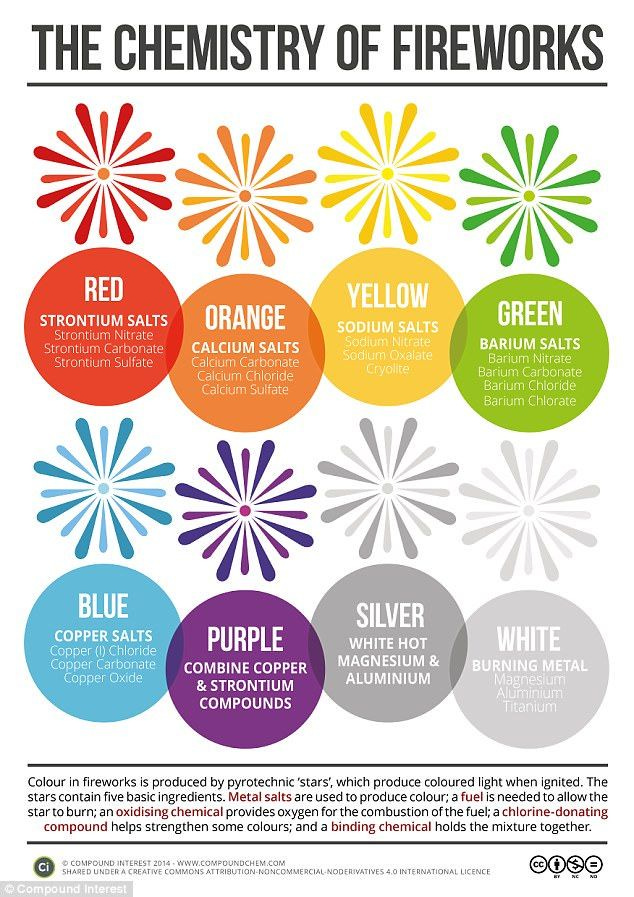
Firework Colors Explained:
- Red: Strontium (Sr) and Calcium (Ca)
- Orange: Strontium (Sr) and Calcium (Ca)
- Yellow: Sodium (Na) as well as Aluminum (Al) and magnesium (Mg) can produce yellow and white sparks.
- Green: Barium (Ba)
- Blue: Copper (Cu) compounds produce blue colors in fireworks. Copper chloride (CuCl2) is a common blue pigment used in fireworks.
- Purple: A combination of strontium (Sr) and copper (Cu) can produce a lavender or purple color.
- Silver/White: Aluminum (Al), magnesium (Mg), and titanium (Ti) are used to produce silver and white sparks in fireworks.
- Gold: Sodium (Na) creates a super bright gold or yellow color in fireworks
Here’s why I’m crabby: it’s currently 11:30pm on July 3rd, 2024 and my neighborhood sounds like a shooting range from all of the fireworks. I don’t mind the gun range but the firework situation is so depressing because we have so few bees left in Detroit. On a good day I count a maximum of five at one time. On a slow day I will see zero-to-only one. Meanwhile my plants are loaded with pollen. In prior years, our lavender and field flowers were bee magnets; you’d see hundreds of bumbles, masons, sweat bees even wasps and butterlies, all mingling as they zip from flower to flower. Now it’s so bad I have been forced to hand-pollinate my produce using a little paint brush. To make matters worse, while people are shooting off fireworks we are being blasted with frequency: (25 second video)

It looks like they’re pushing the “clouds” to the West, which is strange because they usually push them to the East so when the sun rises they have a barracade in place to block it (these pics are all from today, July 3rd):
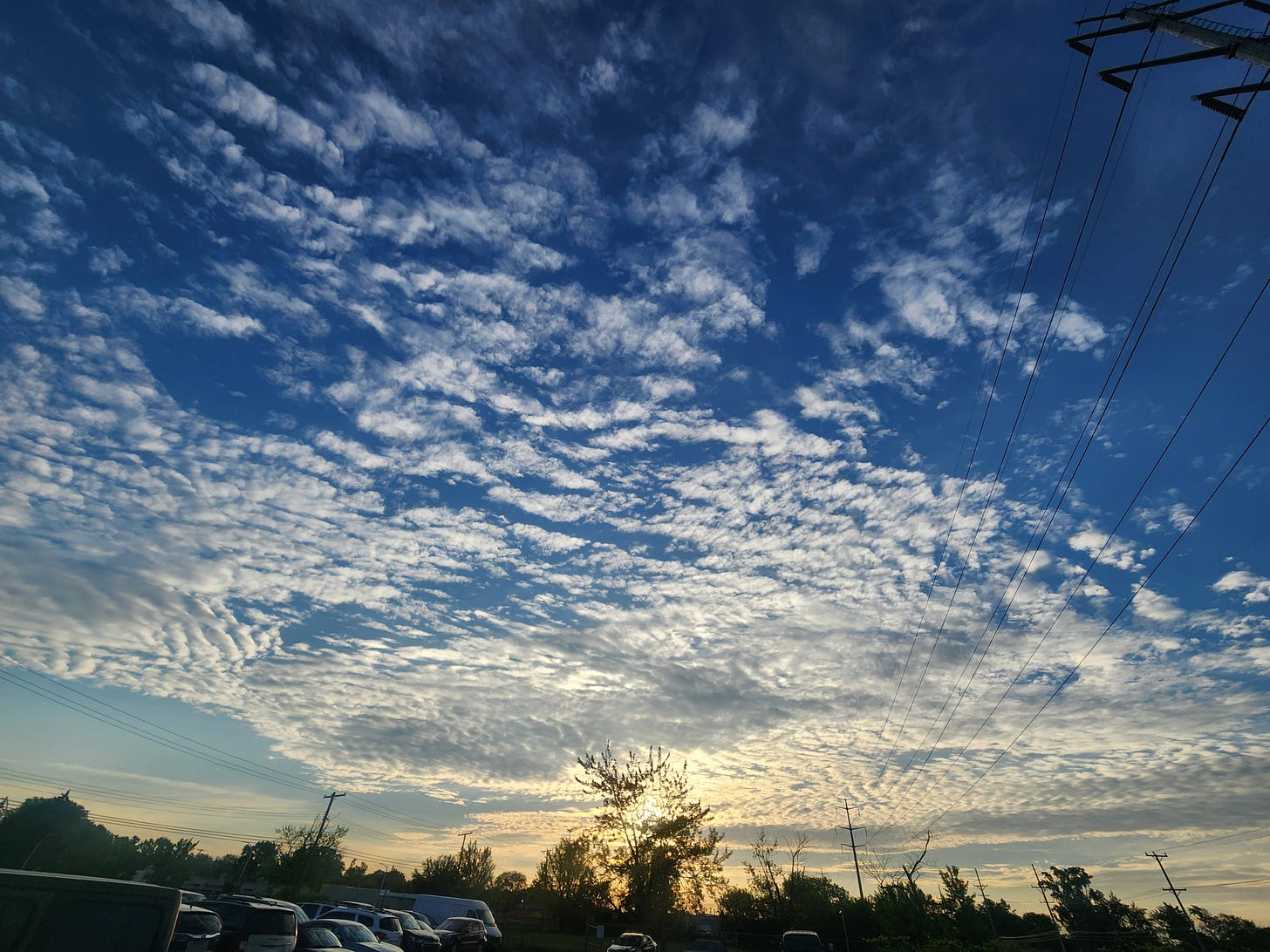
Then they use frequency to move the barracade as the sun moves:
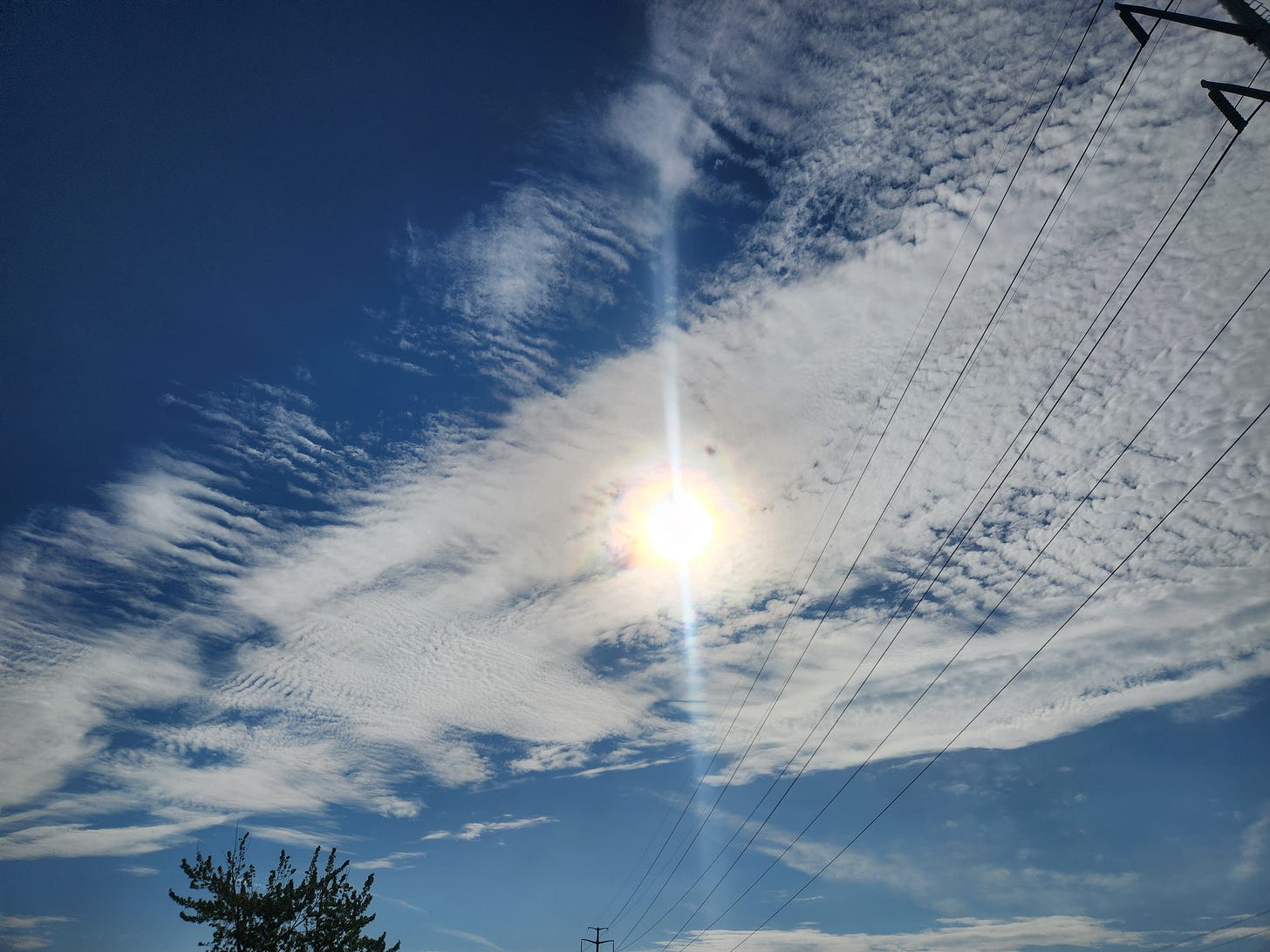
If needed they spray a bit:
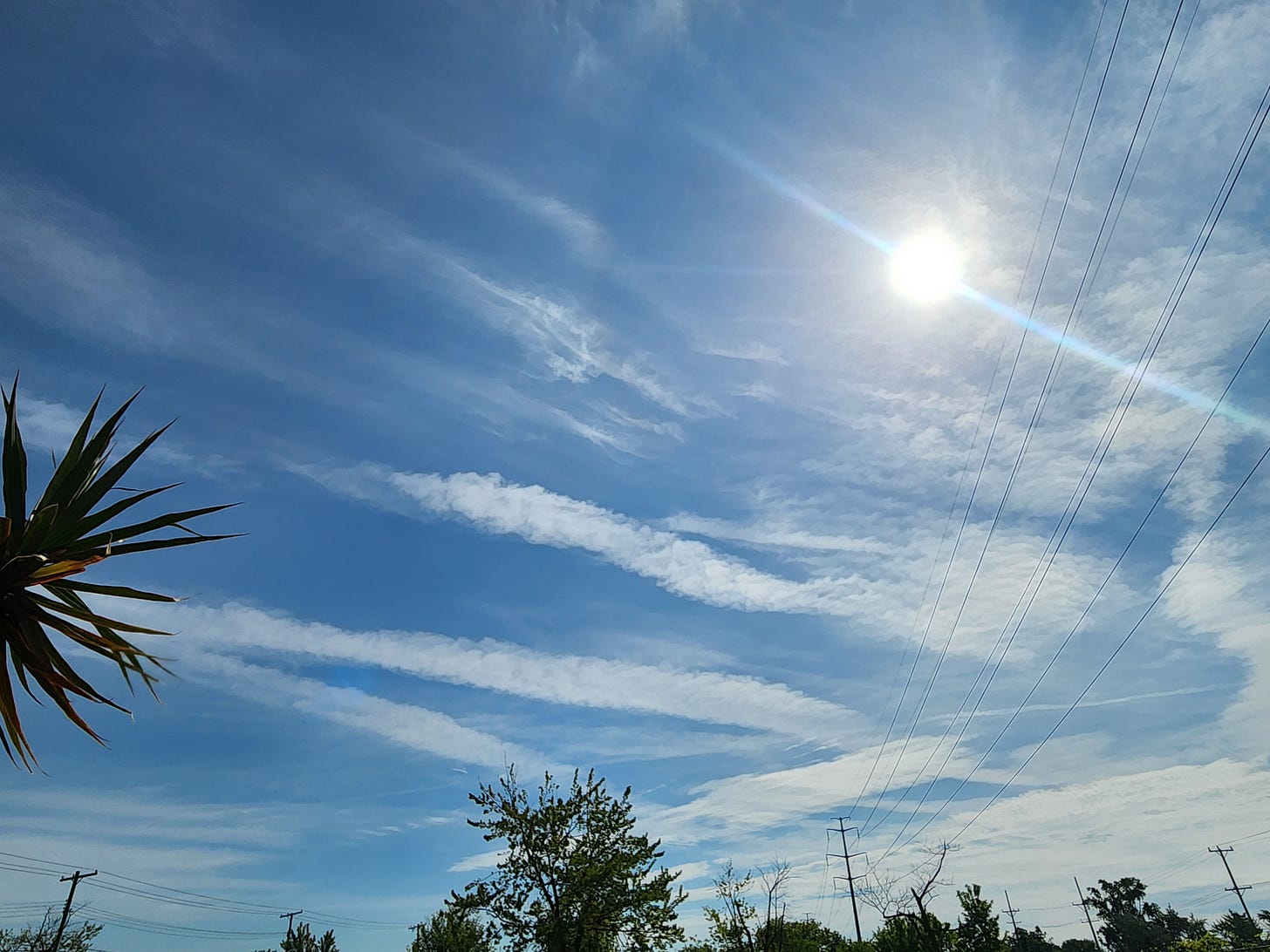
Then use frequency to expand it:
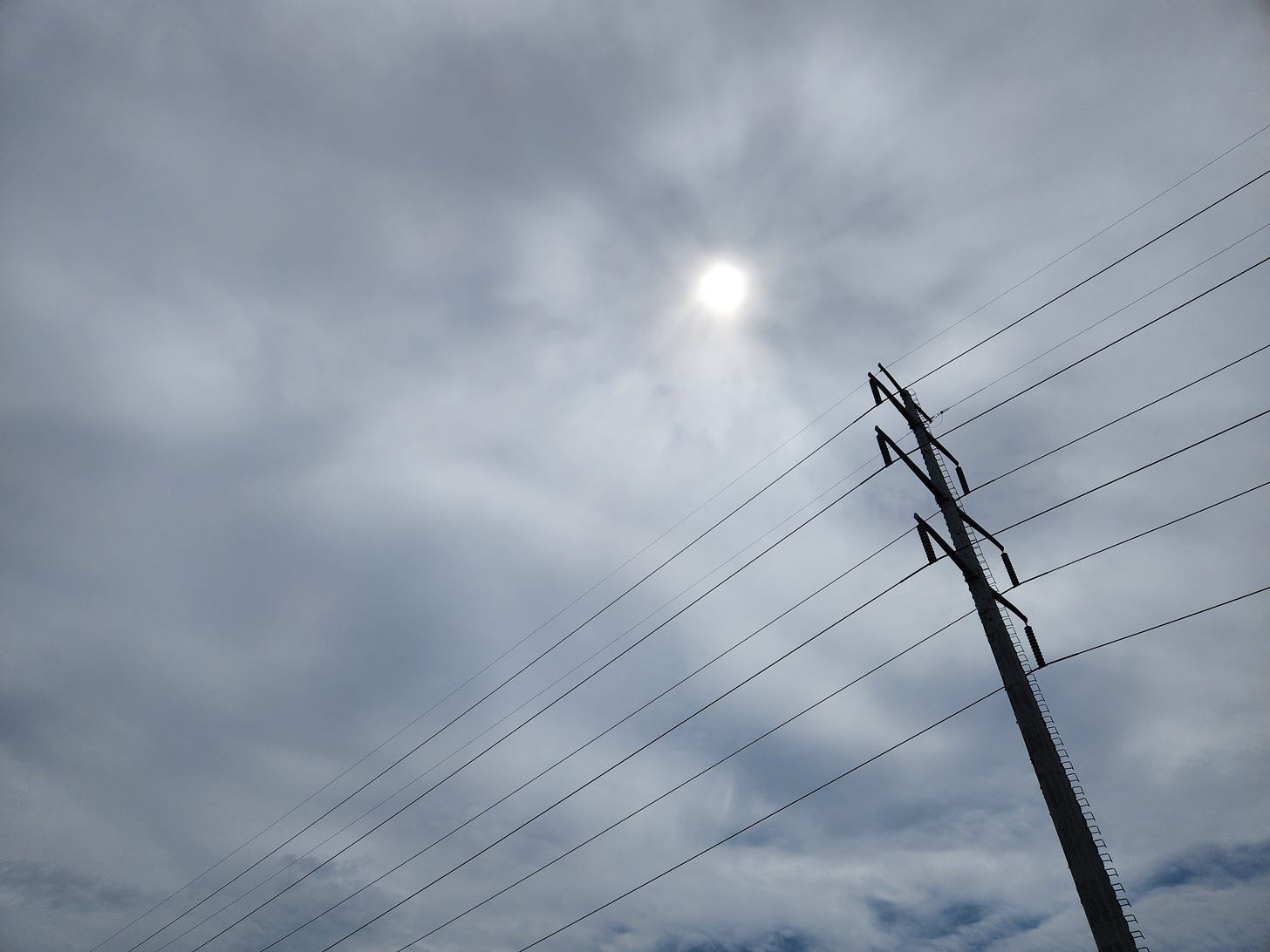
Point being, everyone is shooting fireworks, completely oblivious to the ecosystem collapase in their own back yard and the dangerous levels of frequency being blasted over their heads. And I’m not sure why they’re pushing those “clouds” West (toward Ohio) right now. They must have something planned for July 4th. Let’s all pay attention to the sky tomorrow.
FIREWORKS ARE CHEMTRAILS
In closing, I made a 6 minute video:

My friends, fireworks are literally the identical ingredients to chemtrails. Every time we purchase these products we are handing money to China in exchange for their chemicals which have no oversight therefore we do not truly know what we are releasing into our atmosphere. When we explode these metals and chemicals into the sky we are assisting in our own death and helping the Agendas. They have already patented mechanical trees and robot bees. When we shoot fireworks we are killing our pollinators, our trees, our fish, poisoning our soil, polluting our land… sealing our own fate is not patriotic. Please consider finding a way to celebrate without shooting off fireworks if possible, do it for the bees, for without them, everything collapases.
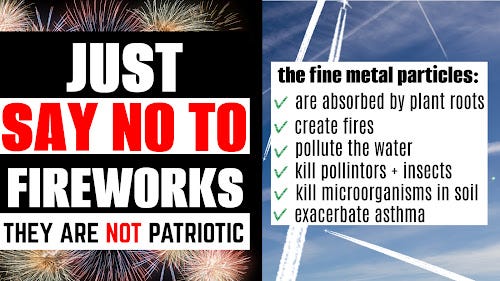


![[deleted]](https://www.redditstatic.com/shreddit/assets/snoovatar-back-64x64px.png)




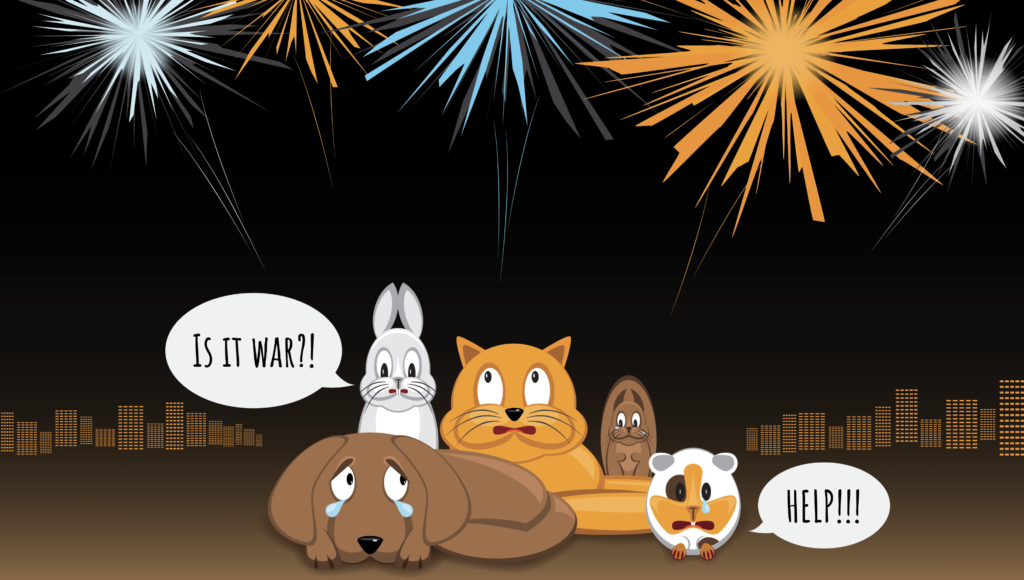




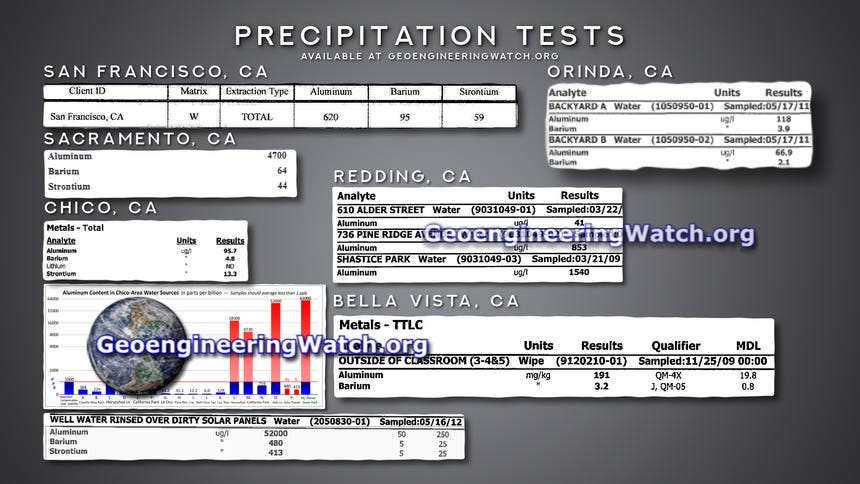
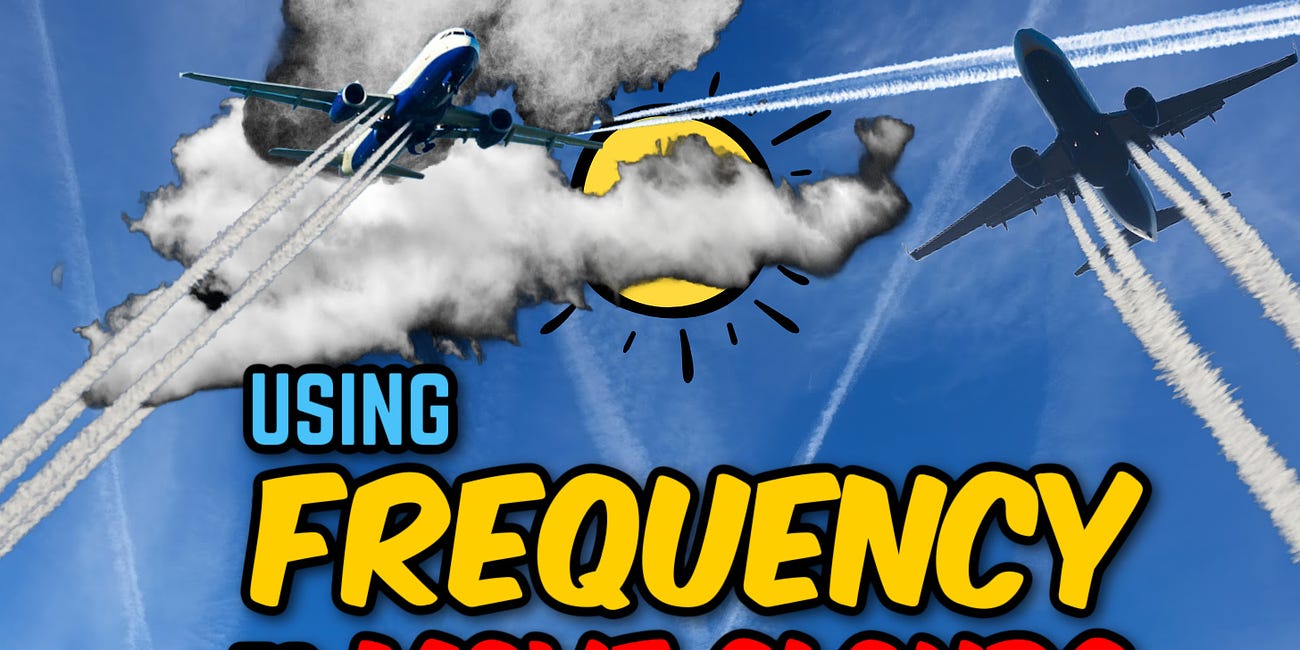



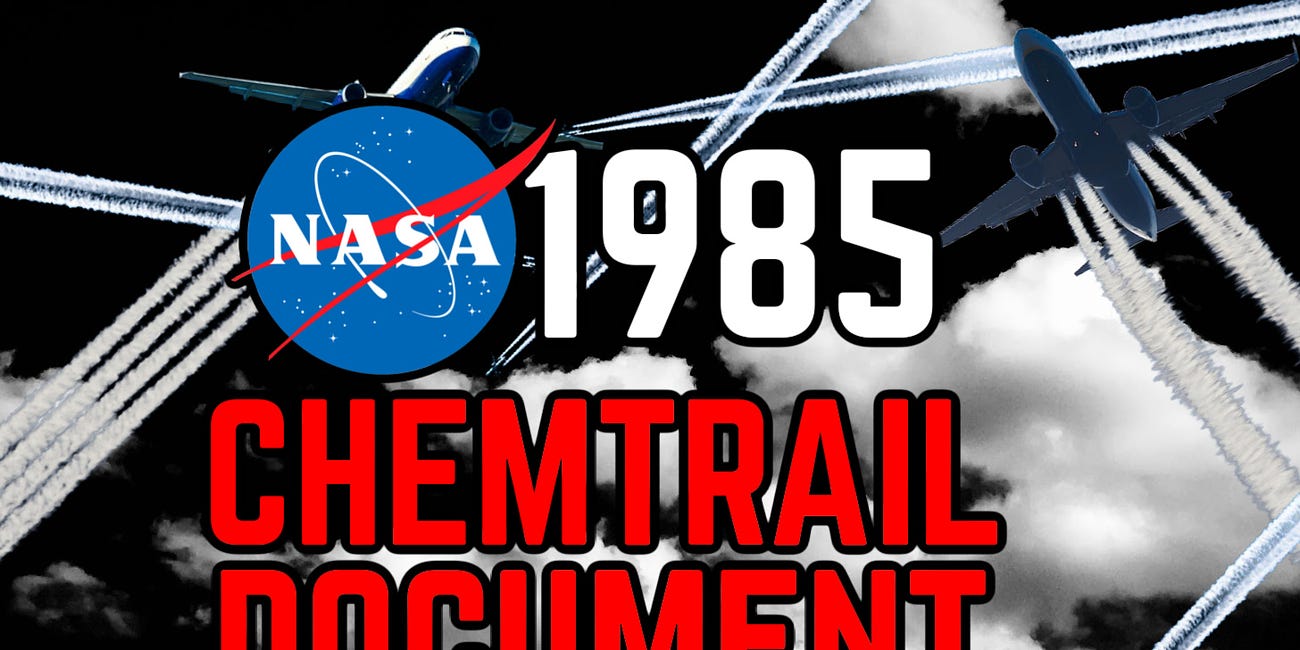
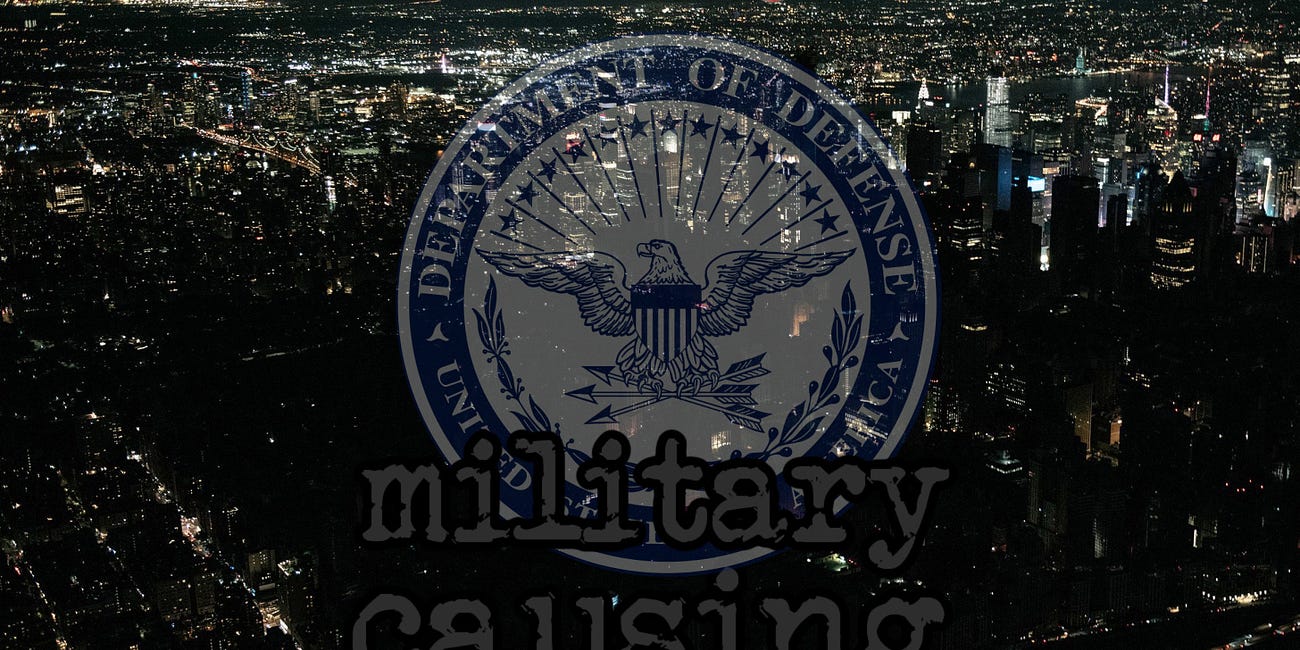

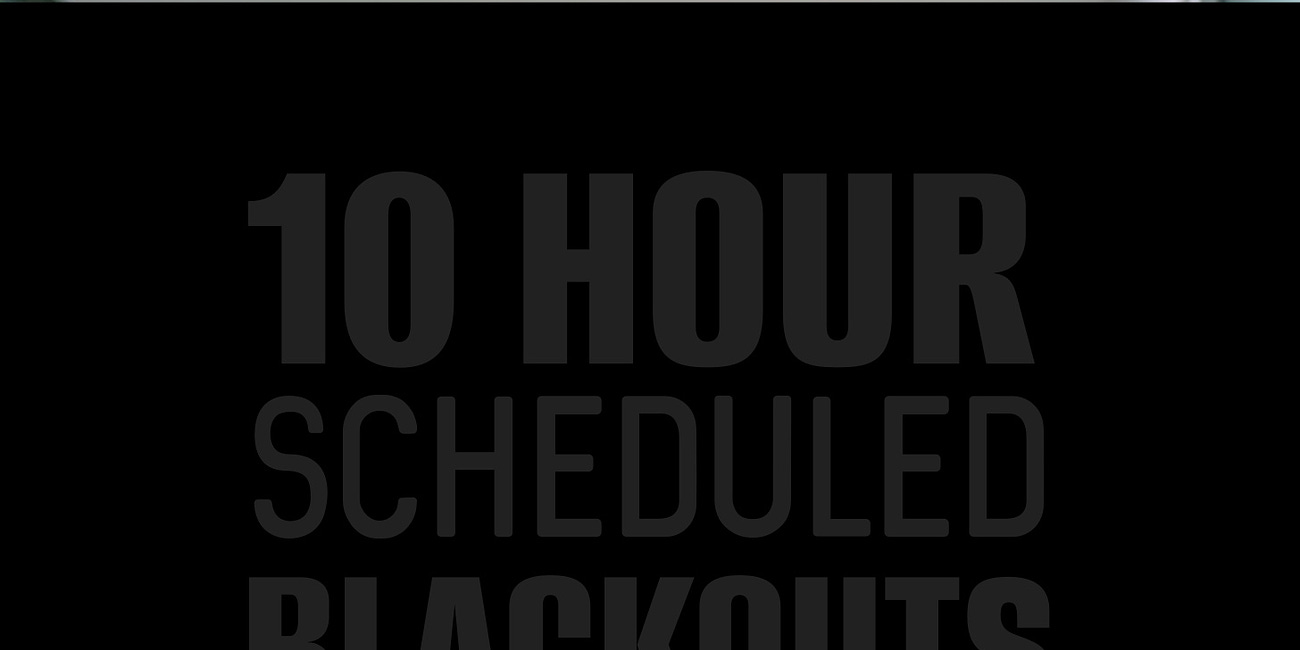


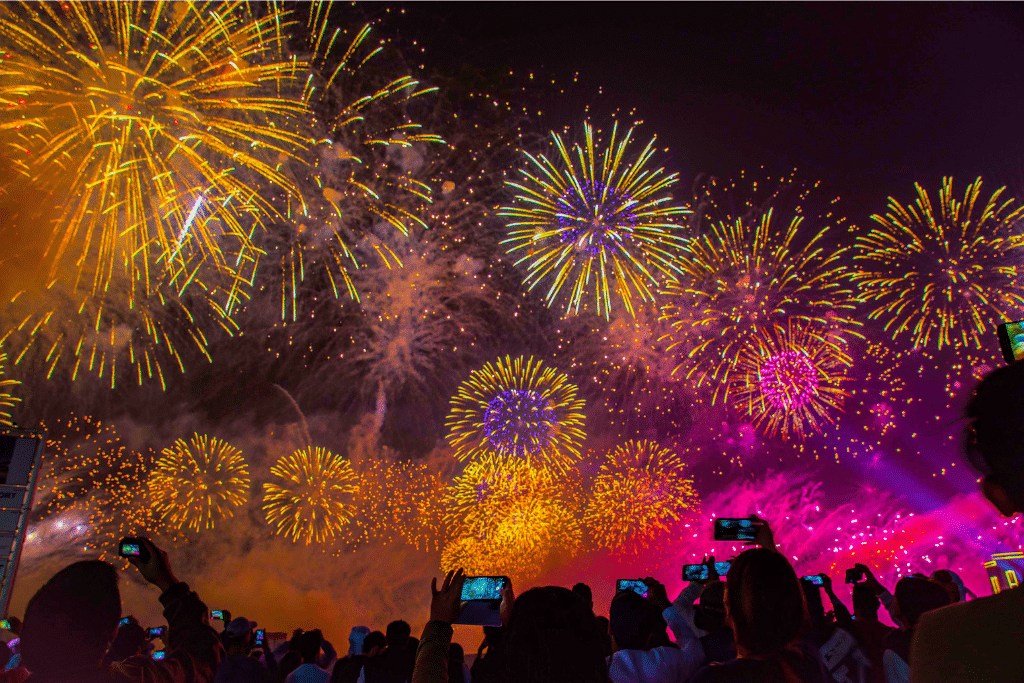
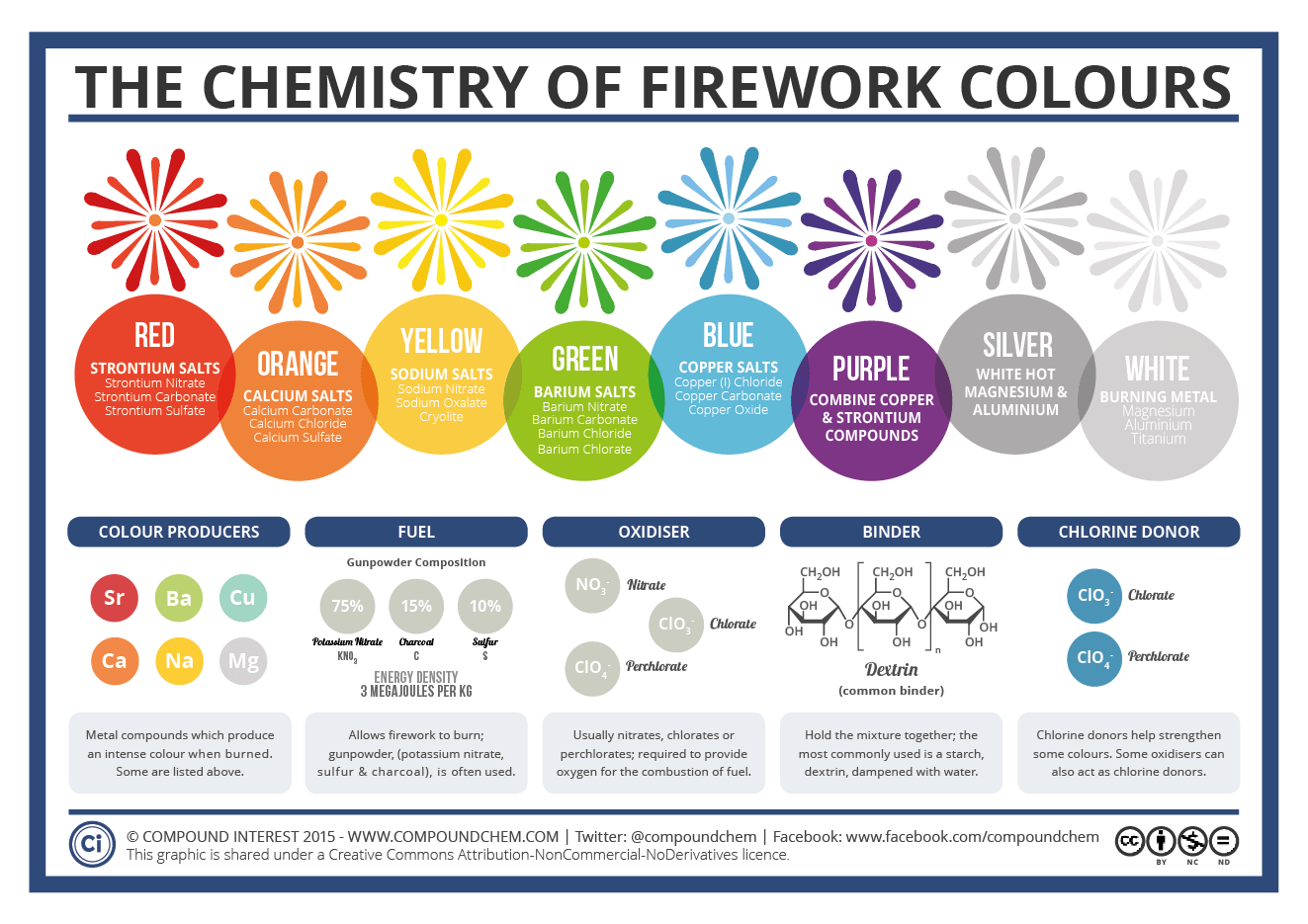

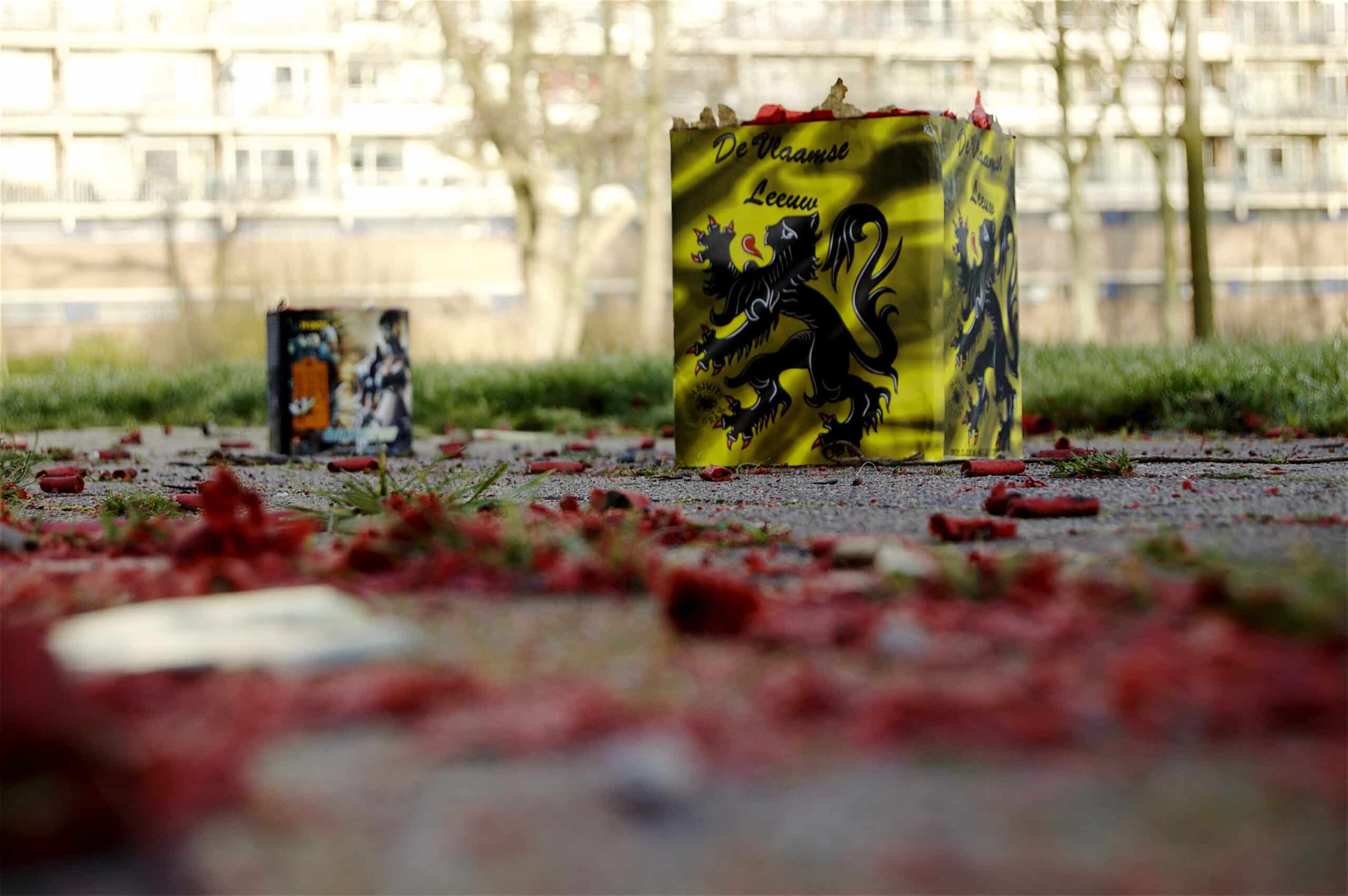
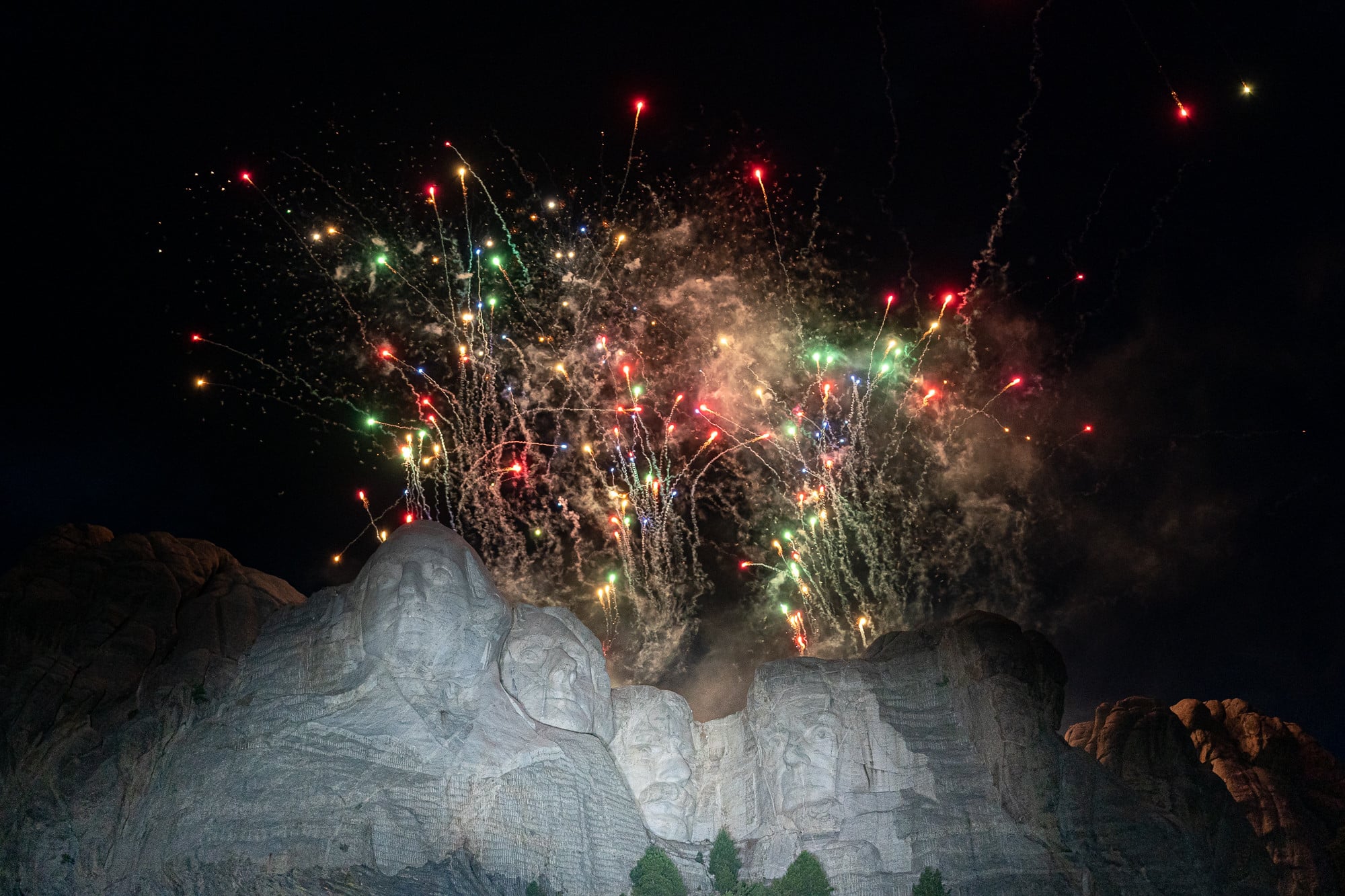

This fascinating documentary follows top experts from Europe, Japan and the US on a scientific investigation into this most surprising organism.